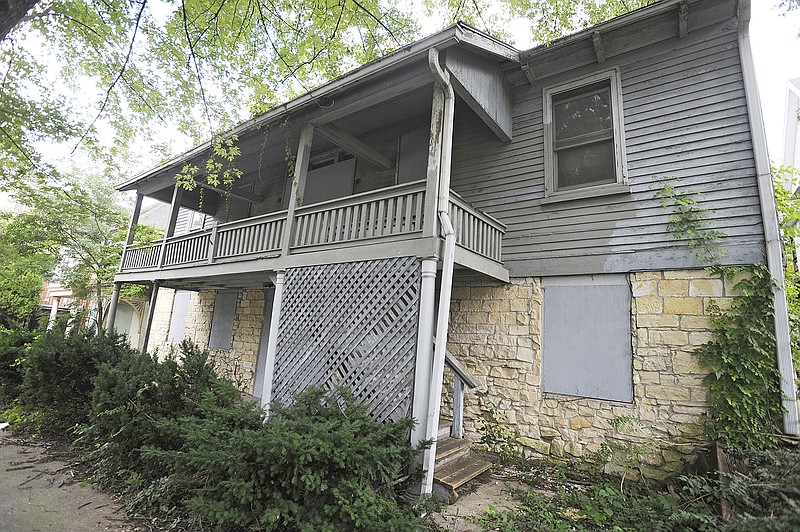A new report says Cole County benefited well from people's use of the Missouri Historic Preservation tax credit.
"Our online check showed 14 addresses in Cole County for which property tax assessments more than doubled, from the year before their Missouri Historic Tax Credit rehabilitations to 2017," the study reported, noting "six properties had total property tax increases of $5,000 or more."
The study, commissioned for the 40-year-old Missouri Alliance For Historic Preservation, looked at online property tax records for 215 addresses that received Missouri Historic Tax Credits over the past 20 years in Cole, Boone, Buchanan, Greene, Jasper and St. Charles counties.
The Cole County portion of the study included 22 properties, mainly on High and Dunklin streets.
The report said: "In Cole County, the properties checked went from a combined assessed total of $980,620 to $3,351,320 - the $2.4 million in increased assessed value is 242 percent more than their pre-restoration values."
Over the years, lawmakers and other state officials have targeted the tax credits as a drain on the state's budget.
In April 2010, then-Gov. Jay Nixon said the tax credits were "first in the nation in expenditures each year."
In March 2014, then-Auditor Tom Schweich called the Historic Preservation tax credit program "an inefficient use of state resources" that had cost the state government more than $1.1 billion over the previous decade.
Without being specific, last year Gov. Eric Greitens said in his first State of the State address that Missouri's "burdensome, complex and unfair tax credit system" was holding back jobs in the state.
"If special interest tax credits made for a prosperous economy, Missouri would be thriving," the governor said.
Volunteers met Tuesday at the Capitol to take their message of the tax credit's benefits to as many lawmakers as they could meet with.
"The tax credits are only available to certified historic buildings, (that) are on the National Register of Historic Places," said Bill Hart, of St. Louis, who's the Alliance's executive director.
"They're recognized by the United States government as being important historic places that are worthy of preservation."
He said the program helps "re-purpose historic buildings for other uses, and makes sure that these historic resources are around for the next generation of Missourians."
Society as a whole benefits from the tax credits program in a number of ways, Hart said.
"They have to follow the U.S. Secretary of the Interior's standards for historic rehabilitation," he explained. "They're not just putting make-up on a pig.
"They are complete restorations and renovations of buildings that contribute not only now, but for future years, to our state's economy - through increased property taxes those buildings will continue to contribute to the tax base of local communities in Missouri, where before they might have been torn down."
No tax credits are issued until the work has been completed and double-checked, Hart said.
While the study listed 22 different Jefferson City properties, it highlighted two:
The stretch of historic properties at 114, 116 and 118 E. Dunklin St.
"In the years before their Missouri Historic Tax Credit enabled rehabilitation," the report said, "the total assessed value was zero and the total tax paid was zero.
"The current assessment for the same addresses is $170,780, and last year's total property tax for those addresses was $10,849.98."
The Governor Office Building, 200 Madison St., which the report called "the greatest raw value assessment increase" of the properties studied.
Although it houses the Missouri Public Service Commission and some other state agencies, it's a privately owned building that was once a hotel.
"It was one of the first large projects undertaken after the state created the Missouri Historic Tax Credit in 1998," the report explained. "The Governor Office Building's current property tax assessment is $1,448,000, which is $1,208,000 more than the assessed value in 1999, the year before its Missouri Historic Tax Credit work."
The report cited similar success stories in the other five counties.
"These historic buildings are the embodiment of Missouri's shared past," Hart said. "(And) everybody's talking about 'green' and how you tear a building down and build a new, 'green' (environmentally friendly) building.
"Well, the 'greenest' building is the one that's already there - that you don't have to knock down (and) fill up a landfill with the debris."
He said many studies don't include the additional taxes a restored property will generate, as well as the jobs created by the renovation work or the buildings' use in factory and retail settings.
"I think, long-term, they do contribute to a longer-term effect of community development and neighborhood revitalization."
Hart also pointed to Jefferson City's Capital Avenue Historic District, where tax dollars have been used to improve the streets, sidewalks and lighting, and that should spur private development for rehabbing and renovating a number of the buildings.

